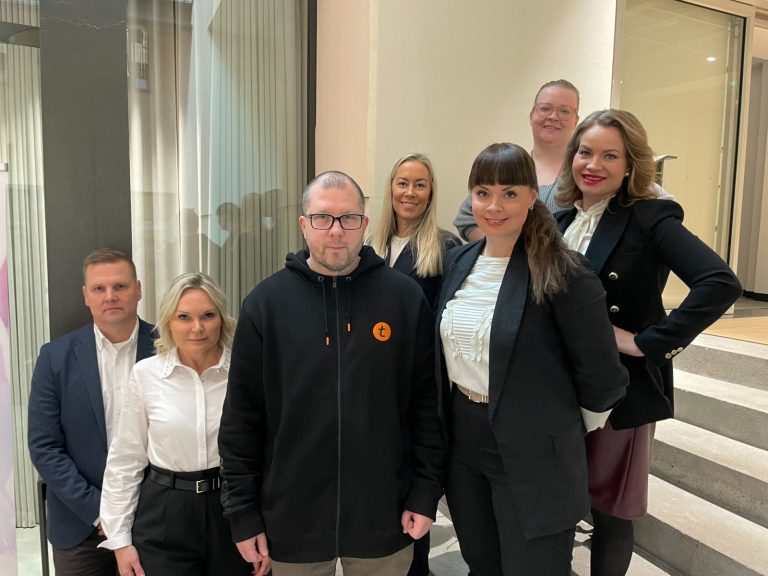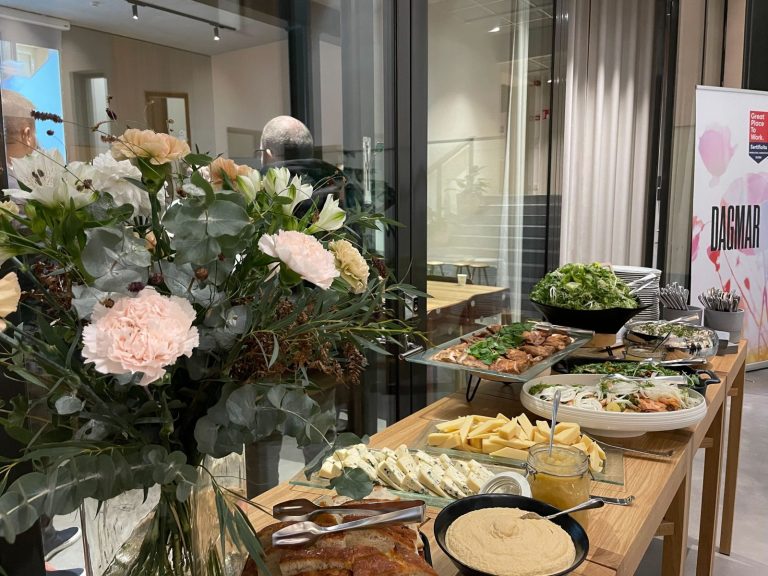As customers demand more and more, the business environment is changing rapidly, the economic outlook remains challenging, and more focus is needed on growth. These themes were discussed on Thursday 26.10.2023 when Dagmar and twoday Biit convened a meeting of business decision-makers to hear about B2B growth opportunities. We summarized the most important takeaways from the event’s interesting expert speeches in this article.

Growth by developing customer experience, Johanna Toivonen and Anni Haavisto, Dagmar
Johanna and Anni work in Dagmar’s Insight team. Together, they have over 40 years of experience in customer experience, research and consulting in various industries in both B2C and B2B companies. In their speech, they highlighted typical challenges in developing customer experience that they have encountered in their customer work and discussions with customers. The challenges were examined from the perspective of both companies and their customers.
One key challenge in developing customer experience is the lack of systematic and consistent management. According to Johanna and Ann, it can be influenced by many factors, for example:
- Customer experience has not been defined or shared in the organization.
- The organization’s corporate culture does not support the importance of customer experience.
- Insufficient resources.
- Customer experience measurement is narrow, business impacts cannot be captured.
Building and developing the customer experience today is affected by, among other things, accelerating change and development of technology, economic uncertainty, changing markets and changing customer needs. According to Johanna and Ann, in order to build customer experience in this uncertain and changing world, the following things should be taken into account:
- Focus on the essentials. This may require choices and prioritization.
- Operate only based on up-to-date and up-to-date information and insight.
- Look for scalability, flexibility and reaction speed in operating models.
Growth by improving cooperation between sales and marketing, Laura Lohi, twoday Biit
Laura from twoday Biit has spent his career understanding and optimizing the customer journey. In his speech, he emphasized that the customer journey is not only the responsibility of sales or marketing teams, but a matter for the entire organization. Laura shared examples of how a unified customer relationship management model can be implemented at different points in the customer journey. Every part of the organization can affect the customer experience and thus the value experienced by the customer. Customer communication can strengthen the customer relationship and increase lifetime value or help reduce customer churn.
Laura ended her speech by emphasizing the importance of change management in improving customer communication and experience. Changes often require the organization to adapt and learn from new ways of doing things. In addition, he mentioned the role of goals and reward models in steering. They enable the organization to ensure that everyone strives towards common goals in building customer experience and growth.
Towards individual customer experience, change management challenges, Mika Vainio, Veho Retail
Mika, who works as Sales Director Veho Retail, gave practical examples of how Veho is building its customer experience development model based on Veho’s customer experience strategy. Veho’s customer experience is built on how to identify customers’ wishes and how to respond to them in accordance with the principles guiding Veho’s operations.
Mika highlighted changes in car sales and customer behaviour, such as digitalisation, electrification, servitisation and specialisation. Mika thinks that a five-star customer experience is personal and meaningful. It creates memorable moments that lead to valuable and long-term customer relationships. The salesperson plays an essential role both online and in face-to-face contact out of habit.
Growth by developing competence and leadership, Jenni Kässi, Aalto EE
In her speech, Jenni, who works as Marketing Director in Aalto EE, discussed learning, artificial intelligence and competence management. He brought up the World Economic Forum’s argument that current skills may be partly unruly in five years’ time – we will need both new skills and upskilling. The challenge is that it is not easy to understand what skills and knowledge are needed in the first place (reskilling & upskilling challenges). The number of experts and the need for experts must also meet. Artificial intelligence also plays a role in disrupting learning as a whole; It does not stop the need for talent, but creates completely new opportunities.
In her speech, Jenni considered how competence management could be adequately included on the management’s agenda and highlighted the following factors:
- It is particularly important to create a culture of continuous learning.
- Intrinsic motivation is directly linked to the quality of work and the experience of meaningfulness.
- Supervisors must have the tools and methods for competence management and encouragement towards more innovative experiments (the culture of learning also gives rise to the important leadership principles of each organization).
According to Jenni, we will learn a lot through work, and training will take place both online and live in the future. This is hybrid learning. In order to truly understand what people need to succeed in their work, we need to go to the human level and be present in everyday life, nurture better leadership and be human to people. Competence management takes place at every level: at the level of individual learning, in organisations and, ultimately, at the societal level.

Want to discuss where your B2B growth lies?
If you are interested in the themes of the event and the content of the speeches, we are happy to continue the discussion with you!
Written by

Business Director
Emma is a business-oriented executive with an international consulting background, who works with digital transformation, customer experience, and martech. At Dagmar, Emma is responsible for B2B business. She is eager to innovate, digitalize, and drive change in the customer’s organization. Emma’s goal is to increase sales and improve the customer experience. She is passionate about both strategy and its careful implementation.